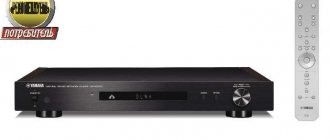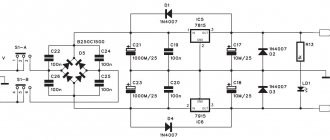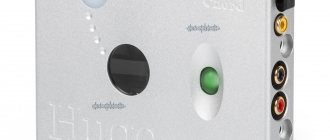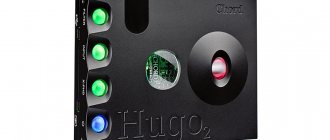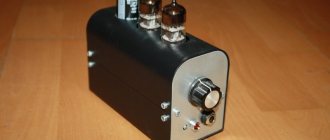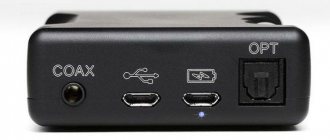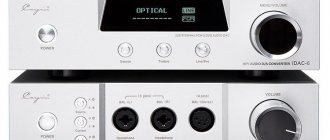Matrix Mini-I Pro - headphone amplifier plus DAC
Matrix Audio is a Chinese company that can be called an increasingly visible troublemaker in the audiophile equipment market over the past 5 years. The company offers a range of different audio equipment, ranging from entry-level devices like the Matrix Rip ($170) to the cutting-edge X-Sabre DAC ($1099). Among the mid-class devices, we can mention the Mini-I Pro. It's a compact amplifier plus DAC combo solution priced at $519. Because of its compact size and minimalist (read industrial) appearance, the Mini-I Pro is a tempting option for the computer audiophile looking for a full-fledged desktop component where space is a concern.
Matrix Audio's design of the Mini-i Pro was guided by the principle of "less is more", resulting in a simple and stylish product. The Mini-I Pro's body is made from thick aluminum alloy, and its assembly is impeccable, with no unsightly gaps (all lines are clear and even). Not a single bolt protrudes beyond the line of the body, so as not to distract attention, while remaining easily accessible in case of need. The Mini-i Pro competes well with other companies known for the excellent build quality of their products, particularly iFi Audio and Schiit Audio, in terms of overall aesthetics and build quality.
On the front panel there is a large OLED display. To the left of the display is a headphone output, to the right is a large volume control. In addition to volume, when you press the knob, you can select various options (input signal channel, digital filter, etc.). If you don't want to use the control, you can select the input and adjust the volume using the included remote control.
On the back you'll find a large selection of input/output connectors to experiment with. Mini-i Pro is equipped with USB, optical, Toslink and AES/EBU inputs. There is a balanced XLR output, as well as an unbalanced RCA output. In terms of hardware, the Mini-i Pro features an ESS Saber 9016 DAC and an XMOS-based asynchronous USB interface for ultra-low jitter and support for DSD/DXD and PCM up to 24-bit/384 kHz.
Still, the Mini-i Pro isn't just another pretty thing. It has won my affection as a mid-range amp/DAC with great sound. Purity, precision and refinement are the main characteristics of the Mini-I Pro. All frequencies are heard clearly, and instruments within the soundstage are positioned with great precision. Generally speaking, frequencies from the highs to the lower mids are presented fairly linearly, while the lows are slightly better defined, resulting in pleasant and dynamic bass.
The highs on the Mini-i Pro have great detail and control and, most importantly, are quite soft. A big fan of bright sound may find the Mini-I Pro to be a little lacking in this regard. Personally, I rather liked the way the Matrix Mini-I Pro reproduced high frequencies. They sound natural and without even a hint of the metallic sound that plagues other products I've come across before. Many other companies have decided to focus specifically on the brightness of the sound, thereby conveying more micro-details in the upper frequencies than in others. This is a kind of trick that manages to impress the masses. The trouble is that the music sometimes sounds very unnatural and tiring. The Mini-I Pro doesn't have this problem. For me, the mids are the heart of music, and in this regard the Mini-I Pro did not disappoint. With near-absolute clarity and a stunning soundstage, instruments sound beyond the Mini-I Pro's price range. The transition from upper to mid-high frequencies is quite smooth, and sibilance rarely manifests itself. The voices are slightly forward, but not excessively. Bottom line: All instruments are presented wonderfully, with excellent detail reproduction from the mid-highs to the lower mids.
The bass is somewhat overly emphasized, but only slightly. Even so, the Mini-I Pro's bass range does not disappoint, but shows good control. The lows have a lot of richness, I think it's more of a 3D bass rather than a 2D bass, with a slight emphasis in the mid-bass giving a very nice touch to the bass. The most impressive aspect of the Mini-I Pro's bass is its control. The bass may rumble and rumble, but doesn't penetrate into the lower mids, ensuring midrange clarity never fades.
I was very impressed with the Mini-i Pro. For consumers looking for a compact all-in-one desktop solution with plenty of inputs and outputs and rich features like DSD/DXD support, look no further than the Matrix Audio Mini-i Pro. Considering its price, functionality and excellent sound for a mid-range device, the Matrix Mini-i Pro is a great value buy.
Based on materials from headphone.guru Author: Arlindo Borges
Buy Matrix Mini-I Pro at hi-audio.ru
DAC + Headphone Amplifier + Matrix Audio Mini-I Preamplifier
- Bonuses upon purchase:
- Free shipping
- Hi-Audio.ru is the exclusive distributor of Matrix Audio. Manufacturer's warranty
- +3 months additional warranty
- Only we have a $10 discount on the purchase of the top Jriver music player (worth $50)!
- 3% discount on your next order!
Excellent design
The Matrix Mini-I body is made of aluminum, the surface of which has undergone anodic oxidation (high-quality anodized parts are considered good insulators). On the front panel of the device there is an information OLED display with white backlight.
Convenient control
Mini-I uses a single control knob, which greatly simplifies the process of setting up the device. The digital volume control is highly accurate and has excellent channel balance. The volume from the headphone output and line output can be adjusted separately from each other.
The device has a noise reduction function when turned on/off, and also supports playback from iPad and iPhone: now you can play PCM files from your gadget using a special Lightning to USB Camera Adapter cable. Owners of Android devices can connect their phone using an OTG cable.
The Matrix Mini-i has three operating modes : two of them in the “Preamplifier” mode and one in the “DAC” mode. Preamp 1 mode allows you to simultaneously adjust the volume of the speaker and headphone outputs, with both outputs operating simultaneously . In Preamp 2 mode, the volume is adjusted asynchronously (that is, you can set one volume for the speakers and another for the headphones), but when you connect headphones, the other output is turned off. In DAC mode, the volume is at the same level, and the volume control and built-in headphone amplifier are disabled.
In addition to the Matrix Mini-i, you can purchase a control panel.
High quality performance
The Mini-I uses 2 AD1955 converters (from Analog Devices), one per channel. The architecture is completely balanced. CPLD and dual oscillator effectively suppress jitter. The amplification part uses an LME49720 operational amplifier. The headphone amplifier is implemented on the TPA6120 chip.
Matrix Mini-I supports transmission of material up to 24 bit / 192 kHz, and via USB - up to 32 bit / 384 kHz. The new asynchronous USB interface is implemented on the XMOS chip.
The Mini-i design uses an EMI filter to suppress noise from the power supply, as well as a high-quality toroidal transformer.
Different interfaces
The device has balanced and unbalanced outputs. Inputs: USB, optical, coaxial, AES/EBU.
Specifications
Digital inputs:
Coaxial: up to 24 bit / 192 kHz
Optical: up to 24 bit / 192 kHz
AES/EBU: up to 24 bit / 192 kHz
USB: up to 32 bit / 384 kHz
Operating systems: Windows (driver installation required), Mac OS, Linux
Analogue output:
Output Level (RCA): 2 Vrms at 0 dBFS Output Level (XLR): 4 Vrms at 0 dBFS (XLR: 1=GND, 2=HOT, 3=COLD) Frequency Response: 20 Hz (+0 dB) — 20 kHz (-0.12 dB) SNR: > -110 dB 0 dBFS (unweighted), > -112 dB 0 dBFS (A-weighted) Distortion: 0.0008% 1 kHz 0 dBFS
Crosstalk: -123 dB 1 kHz Output Impedance (Headphones): 12 ohms
Output power: 780 mW/ 33 Ohm, 140 mW/ 300 Ohm, 80 mW/ 600 Ohm
Power supply: AC 220-240 V 50/60 Hz AC 100-120 V 50/60 Hz Power consumption:<15W
Fuse: 5X20mm 250V 1A
Weight: 1.3 kg Size: 168*200*46 mm (L*W*H)
Contents: USB cable, network cable, CD with drivers
Matrix Audio mini-i pro
Reviews
- Aleksandr Vladimirovich.
Pros: Great DAC for little money. Made simply superbly. 8-channel Saber ES9016S. 4 pieces in each shoulder. Now they install 1 chip per 2 channels. Or if you're lucky, one for each channel.
Cons: None. The USB and power cords must be changed.
Comment: I use it as a DAC preamplifier. When playing via USB (DSD DOP) there is no clicking or stuttering. DSD in ASIO Native mode is also excellent. Volume adjustment is smooth. I recommend Matrix Audio mini-i pro for a “sharp or bright” system. Smoothes out excess sound changes without loss of sound quality. Without losing air and the smallest nuances. Finally, I was able to listen to jazz comfortably. There were teac ud-501 Burr-Brown PCM 1795, Breeze Audio SABER 9038PRO, Audiolab M-Dac Saber 9018. Matrix is not lost against their background. I recommend!
— Nikolay Sorokin
Pros: Excellent sound both at the headphone output and from the preamplifier.
— Sherstnev Igor
Pros: I have an older model Matrix Audio mini-i pro 2S, with a more advanced chip - ES9026PRO. 1. A very high-quality device - there’s nothing to complain about; 2. The DAC built into the Advance Acoustic X-i90 amplifier noticeably overplays, it’s as if the window was washed in the spring - everything seemed to be visible before, but then the light poured straight into the room - tangible purity and transparency appeared in the entire frequency range, in all entrances; 3. as an ear amplifier, it also gives a decent increase in quality, compared to the Xduoo X3 player and the same amplifier. I was thinking about higher-end headphones than my Panasonic RP-HD10E-K for purely home listening; 4. It performed very well as an external DAC for a CD player from the 90s - Pioneer CD-705, as a transport. High-quality imported CDs sounded new - I wanted to listen to them again. 5. DSD files, if they are converted by a skilled user, play like a charm, without any problems. For transport I use MAC-Mini via USB, the player is Audirvana Plus. 6. The portable player Xduoo X20 easily connects via a high-quality Bluetooth aptX connection, and can be connected as a digital transport, as well as a USB transport.
Cons: None as such. The only inconvenience is that all the controls are switched to a joystick. For me, a couple of buttons, such as “Menu” or “Setup”, would be more convenient. But since my amp has the same control system, it didn’t take me by surprise. Although, there is still one drawback - there is no analog input. And therefore, it is impossible to connect a player that does not have digital outputs.
Comment: Conclusion: a very successful, universal device that can be used as a single device by an overwhelming number of users. A new premium chip at an affordable price that supports all available formats - there will be no problems with content playback for many years. The presence of professional connectors is the basis for future modernization, if necessary.
Show all reviews about Matrix Audio mini-i pro
